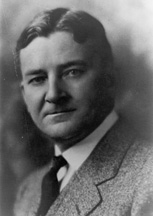 |
| George Washington Gilbert Stuart, American, 1796 |
We had a federal holiday on Monday of this week commemorating Washington's birthday, but it was simply another one of those government manipulations to provide us with three-day weekends. Washington was actually born on February 22 Perhaps a few days don't matter much in a nation that has lost its appreciation for history and reality over the past decades. Still, there are some personalities and events worthy of authentic remembrance. George Washington, fondly recalled as the Father of His Country, is one of them. Here is what Scott Johnson (Powerline) has to say about the subject:
Of all the great men of the revolutionary era to whom we owe our freedom, Washington's greatness was the rarest and most needed. At this remove in time it is also the hardest to comprehend.
Today as we contend with the contemporary equivalent of "the Babylonish empire," let us send up our thanks to the Ancient of Days for this indispensable man.
Johnson originally posted his comment in 2006. Read the rest his brief and notable remarks here.



Sources
Illustrations:
Stuart portrait, a copy known as the Lansdowne Portrait, hangs in the White House. The original is located in the National Portrait Gallery, Washington, D.C.
Postcards are from the author's archive.










